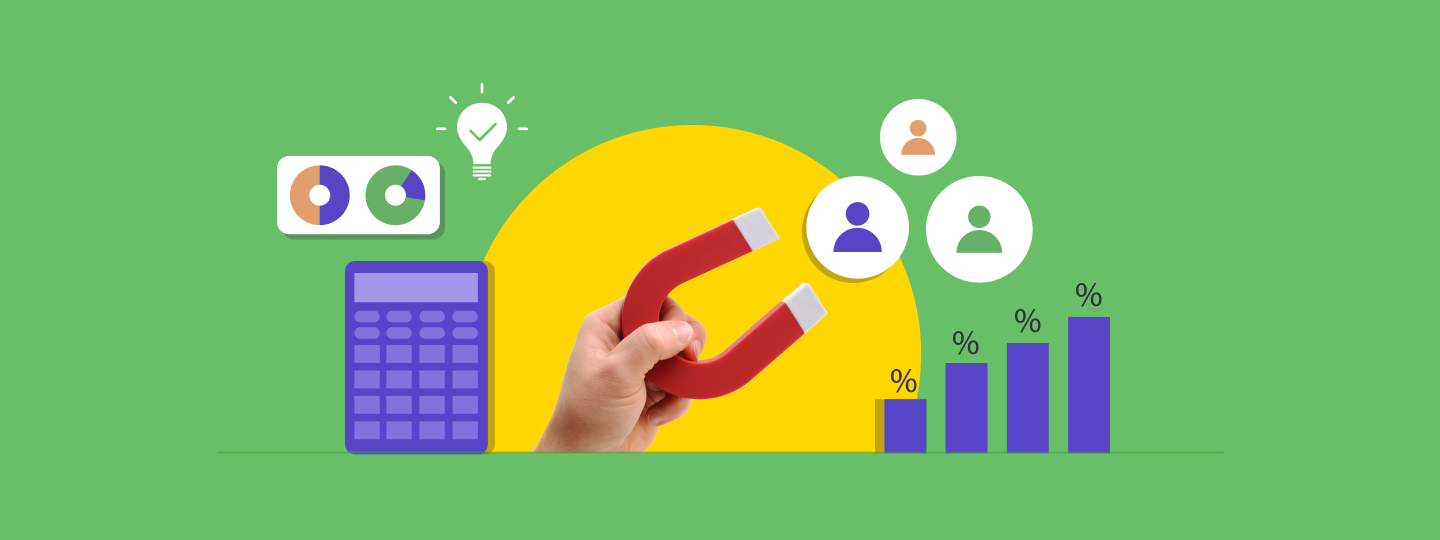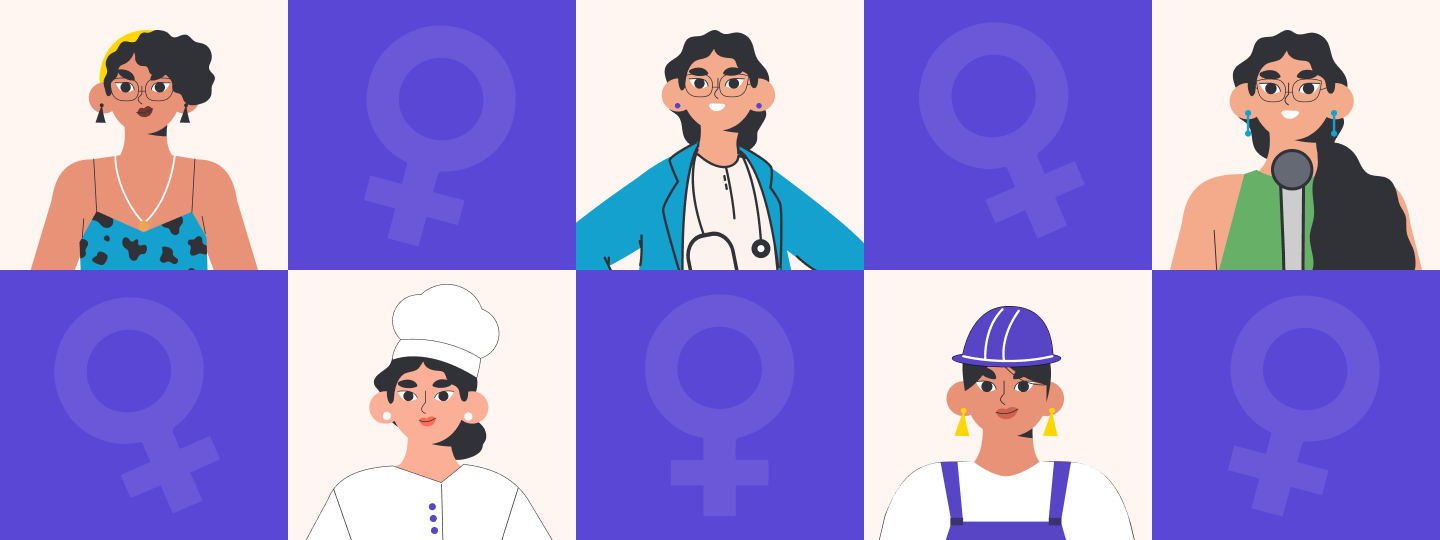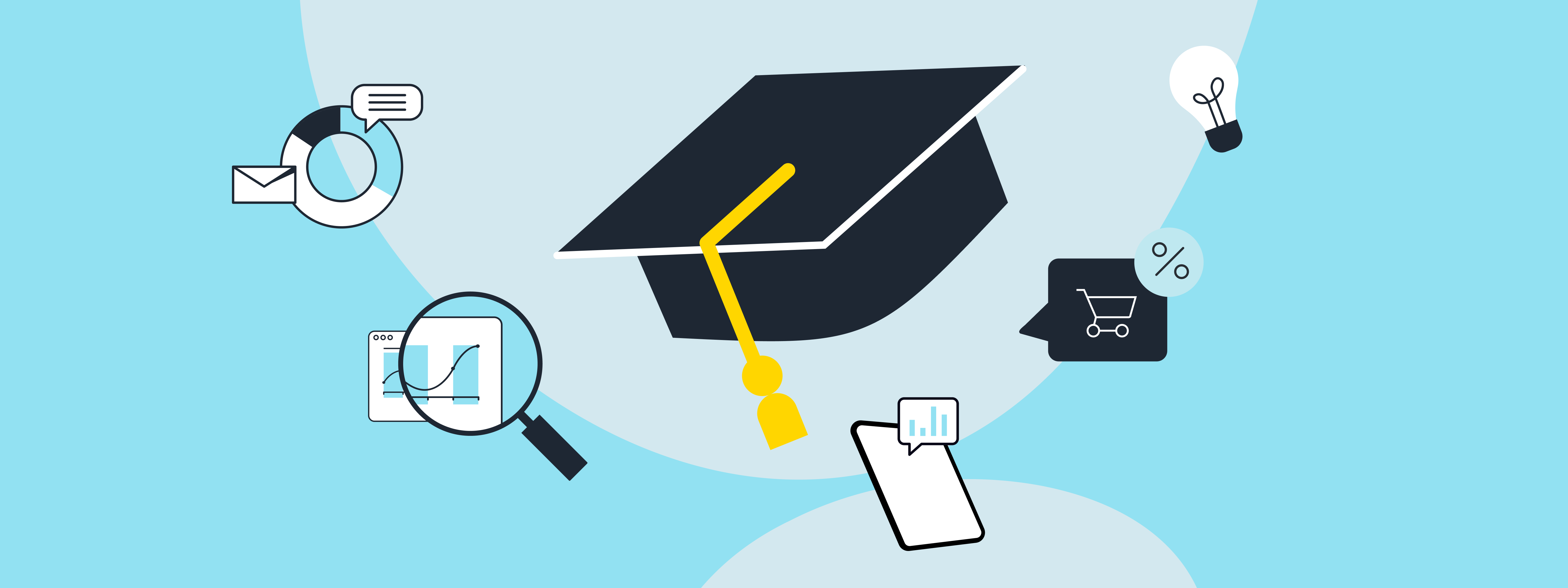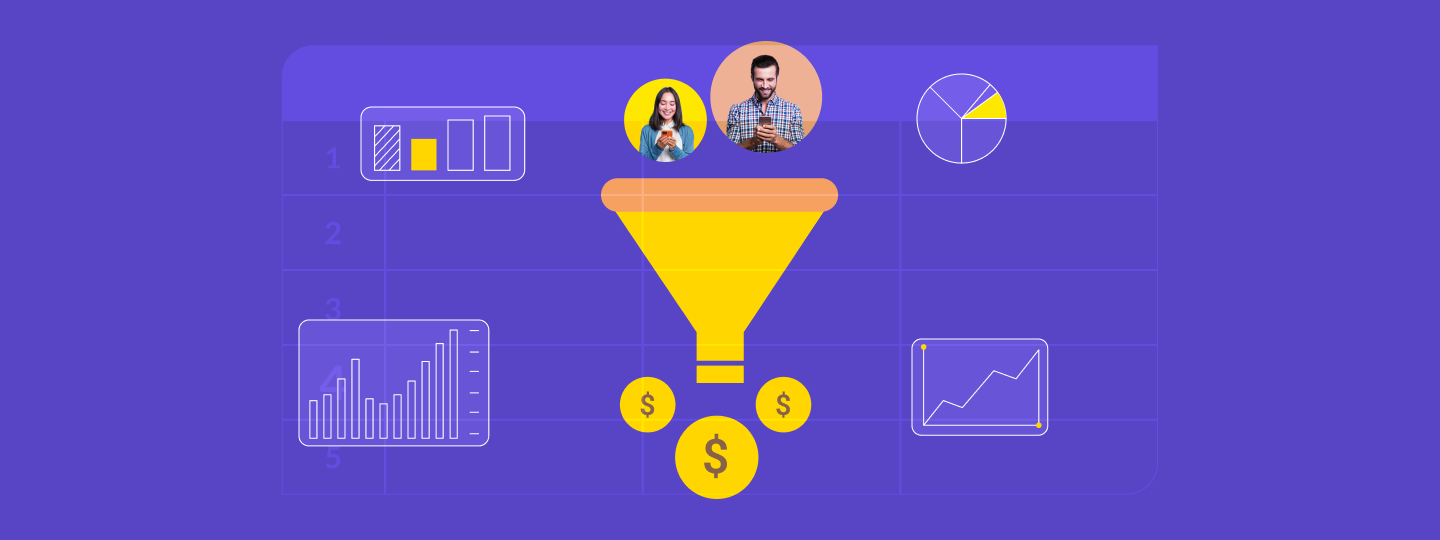Tired of sending push notifications that disappear into the digital abyss, never to be seen or heard from again? It’s time to take control.
Mind you, push notifications have repeatedly proven to be one of the most effective channels for businesses to communicate with their subscribers and customers.
The CTR of a push notification campaign is at least two times higher than that of an email marketing campaign. And if sent at the right time with the right message, its open rate can go as high as 90%.
But here’s the catch: these impressive results are only achievable when push notification campaigns are strategized and executed effectively.
In this blog, we’ll show you how to plan and create high-converting push notification campaigns that will deliver the results you’re looking for. From segmenting the audience to crafting compelling messages for maximum impact, we’ll cover everything you need to know to make your push notification campaigns successful.
Get ready to take your push notification campaigns to the next level!
10 Steps to Create High-Converting Push Notification Campaigns

1.Segment Your Opt-Ins
Segmenting your opt-in for push notification campaigns means dividing your audience into specific groups based on shared characteristics such as demographics, behaviors, and interests.
Segmentation works well for push notification campaigns because it allows you to send more personalized and relevant messages to your audience. When your subscribers receive push notifications tailored to their interests and needs, they’re more likely to engage with your brand and take action.
Let’s say you run an online store selling men’s and women’s clothing. By segmenting your opt-in by gender, you can send targeted push notifications to your male subscribers about new arrivals in the men’s section and to your female subscribers. This targeted approach can help you improve the relevance of your messages, increase engagement, and ultimately drive more conversions.
Moreover, segmentation also helps you avoid sending irrelevant messages to your subscribers, which can lead to fatigue and decreased engagement.
By sending only relevant messages to each audience segment, you can keep your subscribers engaged and interested in your brand, increasing the likelihood that they will convert.
2. Understand the Different Types of Campaigns
Push notifications have become a popular marketing tool for businesses to engage with customers and drive conversions.
However, many businesses only use push notification campaigns to promote sales and cart recovery, missing out on the potential to create a more valuable and engaging customer experience.
By understanding the different types of push notification campaigns, you can create more diverse and effective strategies that improve the overall customer experience and increase conversions.
Here are some types of push notification campaigns that you can consider for your brand:
Welcome Notifications: Create a great first impression by sending personalized welcome messages to your new customers through push notifications. This can help build a strong relationship with your customers immediately.
Latest Content Promotions: You can send notifications to subscribers promoting your latest brands, products, and deals. By sharing valuable content and information with your audience, you can keep them engaged and informed about your brand.
Company Announcements: Use push notifications to send your customers important company updates and business-critical information. This can include news about new product launches, policy changes, or other relevant information your customers need.
Send Reminders: Send reminders to customers about upcoming events, deadlines, or promotions through push notifications.
Bring Back Cart Abandoners: Re-engage with customers who have abandoned their carts by sending personalized messages and offers through push notifications. This type of campaign can help recover lost sales and increase customer loyalty.
Gauge User Experience via Surveys: Use push notifications to send surveys to your customers and get feedback on their experience with your brand. This can help you better understand your customers’ needs and preferences and improve customer experience.
Re-engage Inactive Users: Send personalized messages and offers through push notifications to re-engage inactive users and encourage them to interact with your brand again. This can help increase customer retention and drive repeat purchases.
By strategically using different types of push notifications and targeting them to different audience segments, you can increase the likelihood of customers taking the action you want them to.
3. Define Your Goal and Objective of the Campaign

When creating successful push notification campaigns, it’s important to define your goals and objectives. Without a clear goal, it’s easy to lose focus and end up with a campaign that fails to deliver the desired results.
Setting goals for your push notification campaigns can be as simple as defining what you want to achieve, whether driving traffic to your website, increasing sales, or boosting engagement. Once you have a clear goal, you can build your campaign around it.
For instance, a flash sale push notification campaign can be an ideal choice if the goal is to increase sales. On the other hand, if the goal is to improve customer engagement, then a campaign that encourages users to interact with your brand or take part in a survey can be effective.
Defining your goals and objectives not only helps you focus your efforts but also helps you measure the success of your campaign. By setting specific targets and tracking your progress, you can gain insights into what works and what doesn’t, allowing you to refine and improve your campaigns over time.
4. Define Your Call to Action
The best push notification campaigns are those whose CTA resonates with the audience and aligns with the campaign goals. When defining your call to action (CTA), it’s important to understand that it should be tailored to the specific segment of your target audience.
But don’t just focus on the macro-conversion (making a purchase), micro-conversions (adding a product to the wishlist or signing up for a newsletter) are just as important. Not every user is ready to purchase, so a hard-sell CTA may not always work. Instead, offering value to the user through helpful tips or personalized recommendations can go a long way toward building brand loyalty.
Remember, your CTA should be concise and clear; most importantly, it should create a sense of urgency. Use action-oriented language like “shop now,” “download,” or “sign up today” to encourage users to take immediate action.
With a well-defined call to action, you can drive higher engagement and conversion rates for your push notification campaigns.
5. Align Your Message and Content to the Above
Crafting an effective push notification message requires more than just good writing skills. To make the most impact, your message needs to be tailored to your target audience, the type of campaign you’re running, and the specific goal you want to achieve.
For example, suppose you’re running a cart abandonment campaign targeting users who added items to their cart but didn’t complete the purchase. In that case, your message should remind them of what they left behind and offer an incentive to return and complete the purchase.
On the other hand, if you’re running a welcome campaign for new subscribers, your message should focus on introducing your brand and setting expectations for what they can expect from your notification. Or you can just give them a tour of your brand like Shein does.

To help you craft messages that resonate with your audience and drive conversions, here are some best practices to keep in mind:
1. Keep it short and sweet – push notifications have limited space, so make every word count.
2. Use action-oriented language – make it clear what you want the user to do.
3. Personalize the message – use the user’s name or other relevant information to make the message more engaging.
4. Use emojis strategically – they can add personality and convey emotion but don’t overdo it.
5. Create a sense of urgency – use time-sensitive language or limited-time offers to encourage users to take action.
6. Test and iterate – try different messages and see what resonates best with your audience.
By aligning your message and content with the segmentation, type of campaign, and goal, you can create push notifications that get opened and drive conversions.
6. Personalize Your Push Notifications
Personalization is a proven tactic that significantly increases the effectiveness of your push notification campaigns. In fact, according to a study by Leanplum, personalized push notifications see a 4x increase in open rates and an 800% increase in conversion rates.
The beauty of personalization is that there are numerous elements you can customize, from addressing the customer by name to highlighting specific items they have browsed or wishlist. You can even notify them of a price drop on an item they have shown interest in.
When you address customers by their name in the notification, you create a sense of familiarity and importance, while highlighting a price drop on a specific product they have been considering can prompt them to purchase.

However, there is a fine line between personalization and intrusion. It’s important to ensure that the level of personalization is appropriate and doesn’t make the customer feel uncomfortable or spammed. So, when personalizing your push notifications, set limits and make them relevant to the customer’s interest.
7. Make The Notifications Engaging
Once you’ve sorted the personalization part, you must ensure you don’t send plain texts to your audience. Adding images or animations can make push notification campaigns more engaging and visually appealing. Push notifications with images are more likely to be opened than those without.
When designing visuals for push notifications, keep in mind that they should be relevant to the message and brand. Use colors that match your brand’s color palette and include images that are recognizable to your brand.
If you’re promoting a sale, you can include an image of the product on sale or a discount code in the push notification. And if you’re promoting a new product, include an image of the product with a call-to-action to learn more.
It’s also important to ensure the visuals and the amount of space you get on the notification screen are optimized for mobile devices. Use high-quality images and compress them to reduce the file size. This will ensure that the push notification loads quickly and doesn’t take up too much space on the user’s device.
In addition to visuals, you can make push notifications more engaging by adding emojis or using a conversational tone. This makes the message feel more personal and less like a generic marketing message.
Toppr’s Impact Story is one of the best push notification examples of how you can use conversation tone with visuals to encourage your subscribers to take action.

8. Automate the Push Notification Campaign Smartly
Push notification campaigns require a lot of effort and time investment. Hence, it’s crucial to automate them to save time and resources. Automating campaigns also ensures the right message is sent at the right time.
However, just automating your campaigns won’t cut it. Every customer segment is different, and what works for one segment may not work for another. Hence, it’s also essential to test different push notification strategies with different types of customers. This is where smart automation comes in handy.
With smart automation, companies can test different messaging approaches and different send times to identify what brings the maximum output. This helps in improving the conversion rate and achieving the desired goals.
For example, if someone abandons the cart, you send push notifications to recover it. Let’s say 100 people abandon their cart, and you can recover 40 of them. You might be satisfied. But what if you could bring back more of these customers?
With smart automation, you can split the cart abandoners into parts and test different times to send them the push notification. Then pick the time when the response rate is the highest. Now, when you send a push notification when the response rate is the highest, you’re surely going to convert more than 40!
WebEngage’s Split block feature is a great example of smart automation. It allows companies to experiment with their automation flow strategy and find out what works best for their audience. This feature enables companies to divide their audience into segments and test strategies for each segment. This leads to more targeted campaigns, higher conversion rates, and improved customer engagement.

9. Use Other Channels in Tandem
In synergy with push notifications, brands can also use other channels to engage with their customers. However, it’s important to use these channels in a complementary way so that customers don’t feel overwhelmed or bombarded with too much communication.
Some other channels that can be used in tandem with push notifications include email, SMS, and social media. WhatsApp is another popular channel that can be used to engage with customers more personalized and interactively.
By using multiple channels, you can reach their customers in different ways and increase the chances of engagement. For example, a push notification might alert a customer about a sale, while an email can provide more details about the sale items, and a social media post can showcase the products.
Additionally, using push notifications and WhatsApp together can be a powerful combination.
For example, you can send a push notification to alert a customer about an upcoming event or sale and then send a follow-up message on WhatsApp to provide more information and answer any questions. This approach can help create a seamless and personalized customer experience, leading to higher engagement and conversions.
Bonus Read: Learn How To Improve Your Push Notification Strategy with WebEngage
10. A/B Test Actively and Optimize the Campaigns
A/B testing involves testing different versions of a push notification to see which one performs better. This allows companies to test distinct variables such as message content, timing, segmentation, and call-to-action. Doing so lets you identify what works best for your audience and refine the push notification strategy accordingly.
Here are some best practices to keep in mind while conducting A/B tests for your push notification campaigns:
- Test one variable at a time to isolate the impact of each change.
- Set clear goals for each test to measure success and inform future decisions.
- Allow enough time to gather sufficient data before making decisions.
- Use a large enough sample size to ensure statistical significance.
WebEngage’s A/B testing feature can help you conduct these tests easily and effectively. It allows you to create multiple variants of your push notification campaigns and set them up to run simultaneously.
The platform also tracks the performance of each variant, allowing you to easily identify which one is driving the best results. This helps you optimize your push notification campaigns for maximum impact and achieve their marketing goals.
Ready to Take Control of Your Push Notification Campaigns?
A high-converting push notification campaign is one that is constantly learning from customer data and adapting to their interests, intent, and behavior.

By using a powerful push notification automation platform like WebEngage, you can create personalized campaigns, automate them, and analyze their performance to optimize continually for better results.
WebEngage’s features, such as segmentation, personalization, A/B testing, and smart automation, can help you effectively create and optimize your push notification campaigns. With real-time analytics and reports, you can also track and measure the success of your campaigns and adjust them accordingly to maximize conversions.
Deliver Meaningful Messages For Your Business Today. Take a demo now.








 Surya Panicker
Surya Panicker
 Diksha Dwivedi
Diksha Dwivedi
 Harshita Lal
Harshita Lal